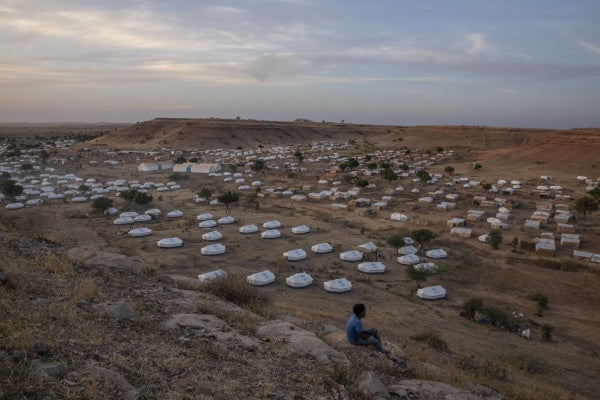Lire la version en français / Hier auf Deutsch lesen / Lea la versión en español
Since the beginning of Sudan’s conflict in April last year, we’ve been ringing alarm bells about the crisis, again and again, and highlighting the international community’s failure to address it. We’ve focused a lot on Darfur, in the west of the country, where wide-scale atrocities have forced more than half a million people to flee their homes, many across the western border to Chad.
Today, we’re going to look at the conflict on the opposite side of Sudan, in the east, in areas that border Eritrea and Ethiopia.
The fighting in Sudan between the Rapid Support Forces (RSF) and the Sudanese Armed Forces (SAF) is causing intense civilian suffering for Sudanese citizens in many parts of the country. And they’re not the only ones.
Often overlooked is that more than one million refugees were living in Sudan when the conflict started, many of them in the east.
These are people who fled severe repression in Eritrea or the atrocity-filled conflict in Ethiopia’s Tigray region, hoping to find safety in Sudan. Now, their lives could be in danger again.
Recent weeks have seen RSF attacks on towns in the area. If this spreads to other parts of the eastern border region, the fate of tens of thousands of refugees will be very much at risk.
Refugees from Ethiopia in particular have been trying to draw attention to their precarious situation since the Sudanese conflict began. Some fear they will be targeted by the warring parties after being accused of assisting enemies. There are already reports some have been arrested or detained.
There’s no clear protection or evacuation strategy for any of these refugees.
Eritreans can’t return home due to ongoing repression – they would likely be punished severely if they ever stepped foot back in Eritrea.
Some refugees from Ethiopia would also face violence or persecution if they returned. Many are ethnic Tigrayans from western Tigray who fled a brutal ethnic cleansing campaign, and those responsible for it still control the area.
Some Ethiopian refugees may be able to return, but they would need cooperation from Sudanese authorities, Ethiopian authorities, and UN agencies to make it happen. The emphasis would have to be on voluntary returns – assisting refugees and providing safe, organized pathways back. No one should be coerced or forced to return to any place where they’d face serious risks.
The international community really needs to step up here and consider all possible means of support, including cash and transport, to ensure that refugees are moved out of harm’s way.
In the whirlwind of extreme violence that’s engulfed Sudan and put so many Sudanese in danger, refugees in Sudan from Ethiopia and Eritrea deserve support, too.












